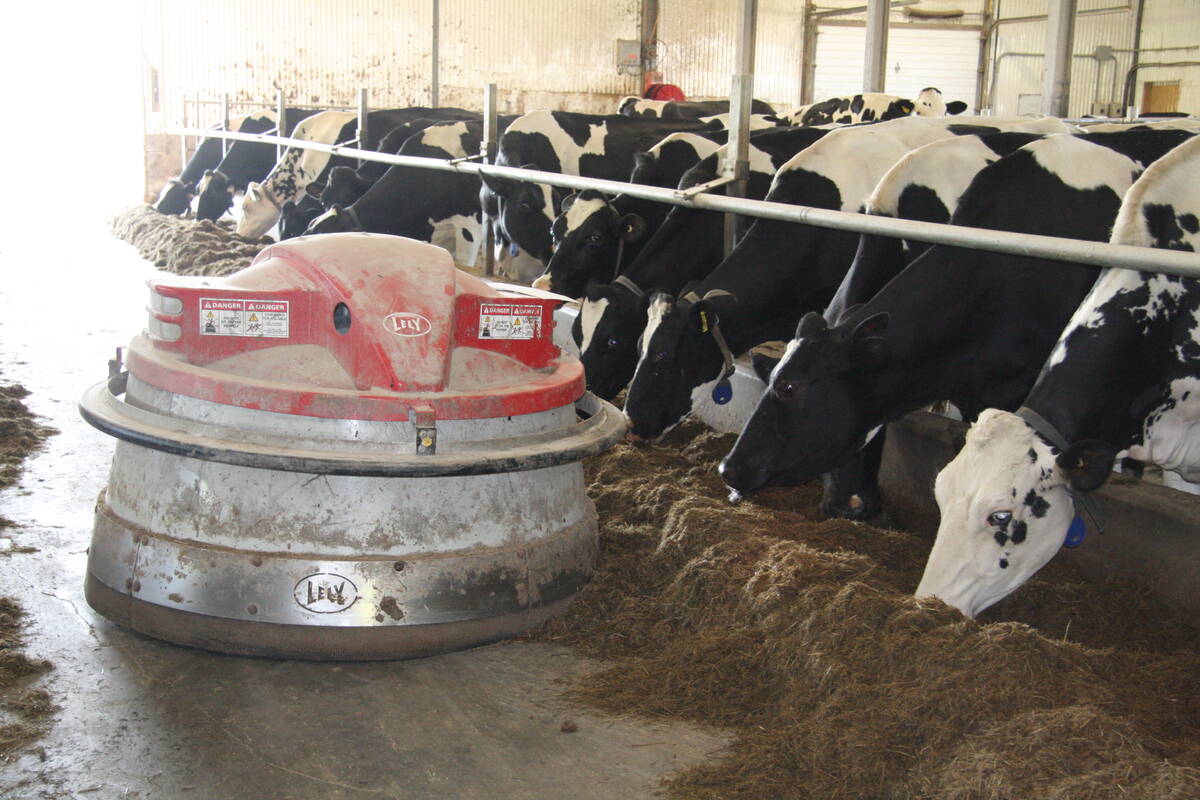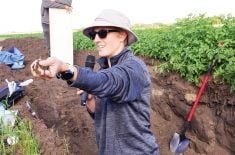STRATHMORE, Alta. — When Charley Orchard clears away the litter from a patch of grass and sees the layer of litter in Rod Vergouwen’s pasture, he knows new soil is being built.
After 10 years of intensive grazing management, Vergouwen has created pastures with knee high grass that ripples in the wind on his farm near Strathmore.
It was not always the case when old practices allowed cattle to graze a pasture continuously until there was nothing left.
His spread was used as a teaching model during a grazing seminar sponsored by the Foothills Forage Association.
Read Also

Partnerships, communication key to disease management
Communication and strong, trusted partnerships are key to managing infectious diseases like Foot and Mouth Disease and HPAI.
Vergouwen grazes yearlings on six pastures of different sizes. Grazing time on a paddock could be anywhere from two weeks to a day to make sure there is plenty of grass left when the cattle are moved. Each pasture receives plenty of rest before animals return.
The extra grass can be stockpiled for fall and winter grazing.
The result is more grass and less reliance on prepared winter feed. He is improving the ecology by building more organic matter and increasing his grass production.
“This is where we are going to make the money, is in the condition of the land,” said Charley Orchard, a grazer mentor from Montana who spent the day teaching the importance of creating ground cover through litter and plants to hold moisture.
To make that work, he shows producers how to calculate the proper stocking rate on the land and rebuild the forage supply so there is always grass left over.
Orchard preaches the symbiosis of harvesting solar energy.
The sunlight makes the plants grow and that energy is transferred to the animals that eat it. They replace soil nutrients in their manure that can also encourage micro-organisms to break down litter so nutrients can cycle through the system.
He calculates 90 percent of the nutrients that are taken up in the pastures grasses are returned to the soil in the manure and urine.
On dry prairie it is easy to end up with open ground that is subject to erosion. Soils covered with plants and dead material hold moisture better. That encourages better grass production.
If there is bare ground after livestock is moved to another paddock, then the land did not get enough rest and probably too much forage was removed. Further, the litter needs to touch the ground so it recycles into the soil.
“It is not how much you are taking, but how much you are leaving,” he said.
Orchard recommends record keeping at every step. Producers need a reliable rain gauge to track precipitation on a yearly basis so weather patterns can be recorded.
If it appears rainfall is much below normal, cattle can be removed before the water is gone and the pastures are overgrazed.
Grazing records show what was done, the results and what is needed for future improvement.
Measuring the amount of forage helps figure out stocking rates.
Grazing cages set in a paddock can show what is growing in a given spot. A producer might also consider setting aside a recovery pen where a larger plot is fenced off and left over a long time to see what grows back when it is untouched.
Clippings collected from random spots also show how much forage is available. It can also show how much diversity exists on the ground and in the surrounding area.
Diversity includes bugs, birds and mammals as well as different plant life. Ground cover may include litter, rocks, moss, bare ground and what he calls basal cover, or the base of the plants.
When the clippings have been gathered, the material can be bagged, dried and weighed to determine how much feed is available.
Knowing a yearling eats three percent of its body weight per day, the feed requirements can be calculated to determine how many cattle can enter the paddock and how long the grass will last.
Stocking rates are the number of cattle that can graze a given spot while density is the amount of room each animal has.
The regional production should also be taken into consideration. Taking half and leaving half may leave too much behind.
“Your land cannot break down or absorb more than about 1,000 to 1,200 pounds of forage or residue per acre per year,” he said.
Orchard also promotes the grazing tall concept where cattle just take off a short amount of forage rather than chewing it down to the ground.
“The shorter we graze, the more energy we require to get the leaves growing back,” he said.
Producers also need to be aware of growth stages and when plants are most vulnerable.
In the spring the emergence stage shows initial growth energy comes from the roots to produce leaves. The next phase or vegetative phase occurs when there is enough leaf surface area to provide enough energy to the plant and roots.
The third stage and most stressful to cure, there is less stress if it is grazed, so it is important to stagger the times a pasture is used.
A stand should also include dried and fresh plants. Dry grasses provide more energy while the green grasses provide protein. If they receive nothing but fresh regrowth, the benefits are not necessarily the greatest.
“It is nothing but protein and it goes straight through them,” he said.
If plants go into fall well rested the carbohydrate levels are healthy and offer more energy. Winter pastures can be grazed for longer periods.
Grazing expert Jim Bauer of Acme told the group plants may be dormant but they are not dead. There is energy stored in the stems and roots and they continue to respirate in winter. If the pastures are overgrazed in the fall and winter, the spring stand may be weak.
“It is easy to graze too hard in the fall because the grass is green,” he said.
However, staying off the land is not the proper advice because the Alberta grasslands systems need grazing to stay healthy, he said.















